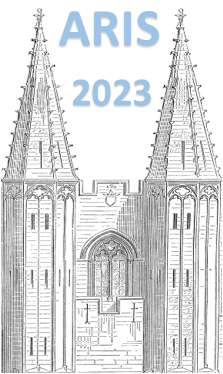Orateur
Description
(for the E690 and E791 collaborations)
For nuclear systems that are slightly unbound with respect to the nuclear strong interaction, the 1- and 2-proton radioactivity decay channel opens [1,2]. The experimental study of these radioactivities offers a unique access to the structure properties of the emitting states. Such data can represent real challenges in terms of theoretical interpretations.
This kind of exotic decay modes is part of the physics program that motivated the development of the ACTAR TPC (Active Taget and Time Projection Chamber) device [3], as well as several other TPC detectors worldwide. ACTAR TPC has been successfully used in recent experiments, related to proton(s) radioactivity in the A~50 mass region.
The first experiment allowed for the imaging of the proton emission from the ${}^{53m}$Co and the (short-lived) ${}^{54m}$Ni isomeric states [4,5,6]. In both cases, the observation of the high angular momenta proton branches allowed for the determination of the complete decay pattern of these states. The second experiment aimed at the direct observation of the ground state 2-proton radioactivity of ${}^{48}$Ni [7]. The scientific context and the experimental results will be presented, and compared to state of the art theoretical interpretations.
[1] B. Blank and M.J.G. Borge, Progress in Particle and Nuclear Physics 60 (2008) 403–483
[2] M. Pfützner et al., Review of Modern Physics, vol. 84 (2012)
[3] B. Mauss et al., Nuclear Inst. and Methods in Physics Research, A 940 (2019) 498–504
[4] J. Giovinazzo et al., Nature Comm. 12, (2021) 4085
[5] D. Rudolph et al., Physics Letters B 830 (2022) 137144
[6] L.G. Sarmiento et al., accepted for publication in Nature Comm.
[7] A. Ortega Moral et al., proceedings of Zakopane 2022 conf.

